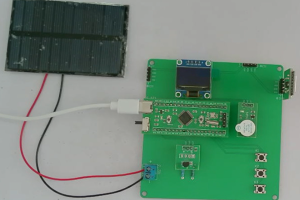设计说明书
总字数:21000+
摘要
随着人们对家居生活品质要求的不断提高,卫生间作为日常高频使用的空间,其环境的舒适性、健康性和智能化管理愈发受到重视。传统卫生间管理依赖手动操作照明、换气等设备,存在温湿度调控不及时、空气质量不佳、能源浪费等问题,难以满足现代家居的智能化需求。
基于 STM32F103C8T6 单片机的智能家居卫生间综合控制系统,整合了 DHT11 温湿度传感器、D203S 人体传感器、MQ-135 空气质量传感器、SU-03T 语音识别模块、OLED 显示屏、ESP8266 WiFi 模块及执行设备(照明灯、加热片、通风扇、浴霸等),实现了卫生间环境的自动化监测与智能调控。系统核心功能包括:通过 DHT11 实时监测温湿度,为环境调节提供数据支撑;借助两个 D203S 传感器分区域检测人体存在,非洗浴区有人且光照低时自动开灯,人离开后延时关闭,洗浴区有人且温度低时联动加热与通风;通过 MQ-135 检测空气质量,超标时自动启动换气;支持 SU-03T 语音控制照明、浴霸、换气设备的开关;可通过按键设置温湿度、空气质量等参数阈值,手动控制设备;OLED 显示屏实时展示各项监测数据;利用 ESP8266 WiFi 模块实现数据上传至手机端,支持远程设置阈值和控制设备。
该系统的实现,有效提升了卫生间管理的自动化与智能化水平,优化了温湿度和空气质量,减少了人工操作,为用户提供了舒适、健康、便捷的卫浴体验,同时为同类智能家居控制系统的研发提供了参考,具有较高的实际应用价值。
关键词:智能家居;卫生间;综合控制系统;传感器;语音控制;WiFi 通信
ABSTRACT
With the rapid development of modern agriculture, precise control of greenhouse environments is of great significance for improving crop yields and agricultural product quality. Traditional manual management methods not only rely on empirical judgments with delayed responses but also have problems such as high labor intensity and inconsistent parameter control, making it difficult to meet the needs of large-scale and intelligent planting.
The greenhouse environment measurement and control system based on the STM32F103C8T6 microcontroller integrates DHT11 temperature and humidity sensors, MH-Z19 carbon dioxide sensors, FC-28 soil moisture sensors, 5516 light detection modules, RTC clock modules, buttons, OLED displays, ECB02 Bluetooth modules, and execution devices (ventilation devices, heating devices, cooling devices, irrigation equipment, supplementary light equipment, etc.), realizing automatic monitoring and intelligent control of the greenhouse environment. The core functions of the system include: real-time monitoring of temperature and humidity through DHT11, starting ventilation or cooling devices when the temperature is too high, triggering heating when the temperature is too low, and linking irrigation equipment to increase humidity when the humidity is too low; detecting carbon dioxide concentration through MH-Z19, starting the application device when it is below the threshold, and starting ventilation when it is too high; synchronizing time with the internal RTC and setting the supplementary light period, combined with the light detection module, automatically supplementing light when the light value is below the threshold and within the supplementary light period; detecting soil moisture through FC-28, and controlling irrigation equipment to water when it is below the threshold; supporting time correction through buttons, setting various parameter thresholds, and manual control of ventilation, heating, cooling, irrigation, supplementary light, and mode switching; real-time display of various monitoring data and equipment status through the OLED display; using the Bluetooth module to synchronize data to the mobile phone, realizing remote monitoring and equipment control (ventilation, heating, cooling, irrigation, supplementary light, and mode switching).
The implementation of this system effectively improves the automation and intelligence level of greenhouse environment control, reduces manual intervention, ensures the stability and accuracy of environmental parameters, provides an efficient and reliable solution for large-scale crop planting, and also provides a reference for the research and development of similar agricultural environment measurement and control equipment, with high practical application value.
Keywords:STM32F103C8T6; Greenhouse Environment; Measurement and Control System; Sensor; Intelligent Control; Bluetooth Communication
目录
第1章 绪论
1.1 研究的目的及意义
1.2 国内外发展情况
1.3 本文主要研究内容
第2章 设计思路与方案论证
2.1 主要元器件选择
2.1.1 主控芯片选择
2.1.2 温湿度传感器选择
2.1.3 人体感应模块选择
2.1.4 空气质量传感器选择
2.1.5 语音识别模块选择
2.1.6 显示模块选择
2.1.7 无线通信模块选择
2.1.8 按键模块选择
2.2整体设计方案
第 3 章 硬件设计
3.1 主控电路模块
3.2 温湿度传感器电路
3.3 人体感应模块电路
3.4 空气质量传感器电路
3.5 光照检测模块电路
3.6 语音识别模块电路
3.7 显示模块电路
3.8 WiFi 模块电路
3.9 按键模块电路
3.10 执行设备驱动电路
第4章 系统程序设计
4.1 编程软件介绍
4.2 系统主流程设计
4.3 独立按键
4.4 OLED显示流程设计
4.5 温湿度检测模块子流程
4.6 语言识别模块子流程设计
4.7 WiFi模块子流程设计
第 5 章 实物测试
5.1 整体实物测试
5.2 温湿度传感器功能测试
5.3 人体红外传感器功能测试
5.4 空气质量传感器功能测试
5.5 语音识别模块功能测试
5.6 WiFi 模块功能测试
5.7 执行设备与按键功能测试
第6章 总结与展望
6.1 总结
6.2 展望
致谢
参考文献
附录
附录一:原理图
附录二:PCB
附录三:主程序
购买后可查看具体内容!

